Economists are fond of talking about the specialness of the United Kingdom back when it kicked off the industrial revolution. Similarly, USA is doing remarkably well by some metrics compared to its demographics. These cases are true enough, but I want to talk about another kind of Anglo exceptionalism. Take a look at this list of the most obese countries:
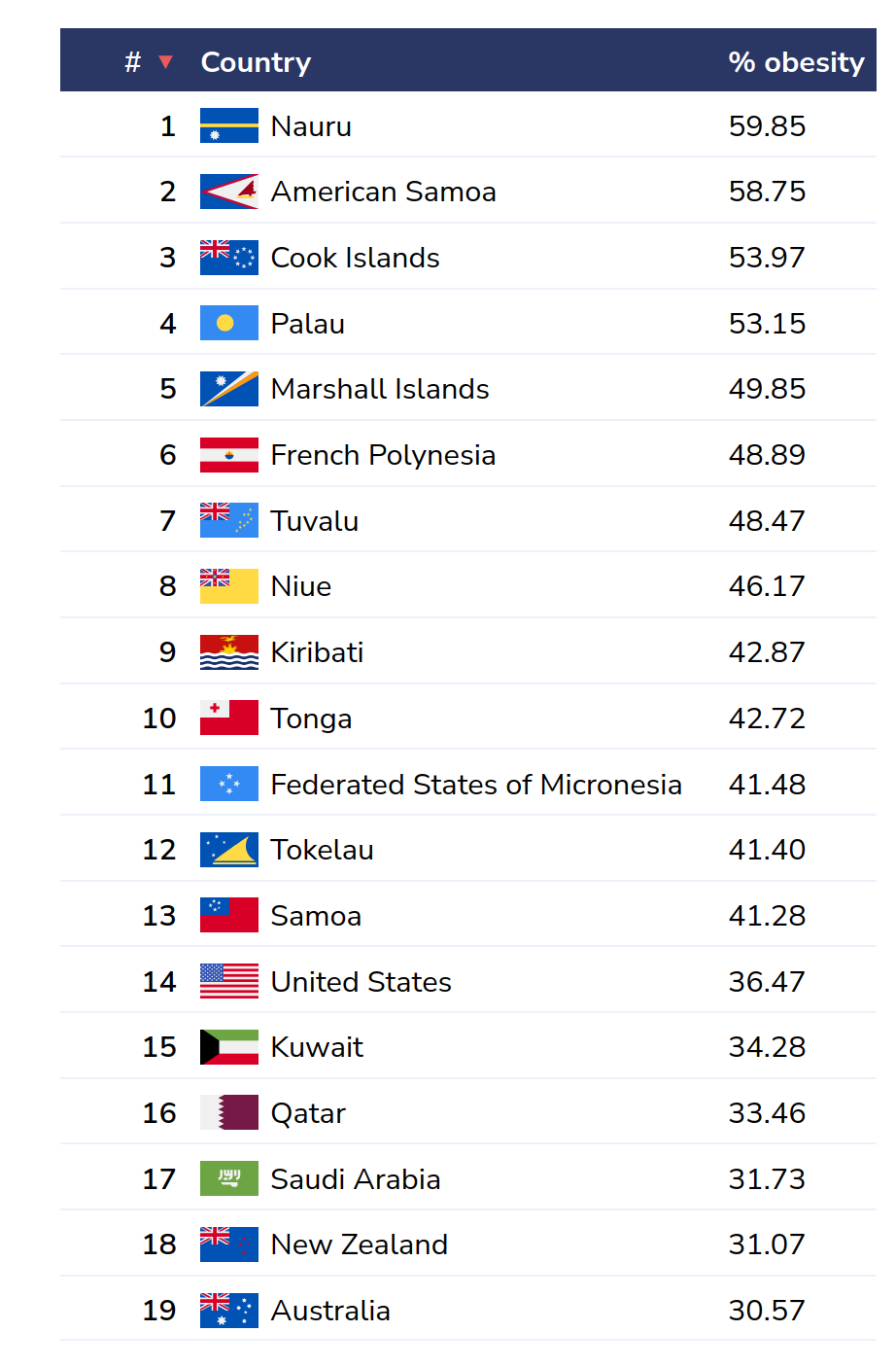
The list is from the Global Obesity Observatory. (The data are from this 2017 meta-analysis). We can make the following observations:
- The top 13 countries are all inhabited mainly by Polynesians or Micronesians.
- There are 3 oil rich Arab countries in the list
- There are 3 Anglo European countries in the list.
Statistically, this seems unlikely to occur by chance. So let’s have a look at the statistics. As far as I can tell, there’s no table with this data, or one for the combined male-female sample. Maybe if they had added another 20 authors to the existing hundreds, they could have supplied the reader with the most elementary of results in useful format, at least somewhere in the 429 page supplement. After giving up trying to find it from the paper and its supplement, I recalled that OWID usually has this kind of thing, and true enough. Here’s the age-standardized map of obesity% (i.e., assuming every country has the same age distribution):
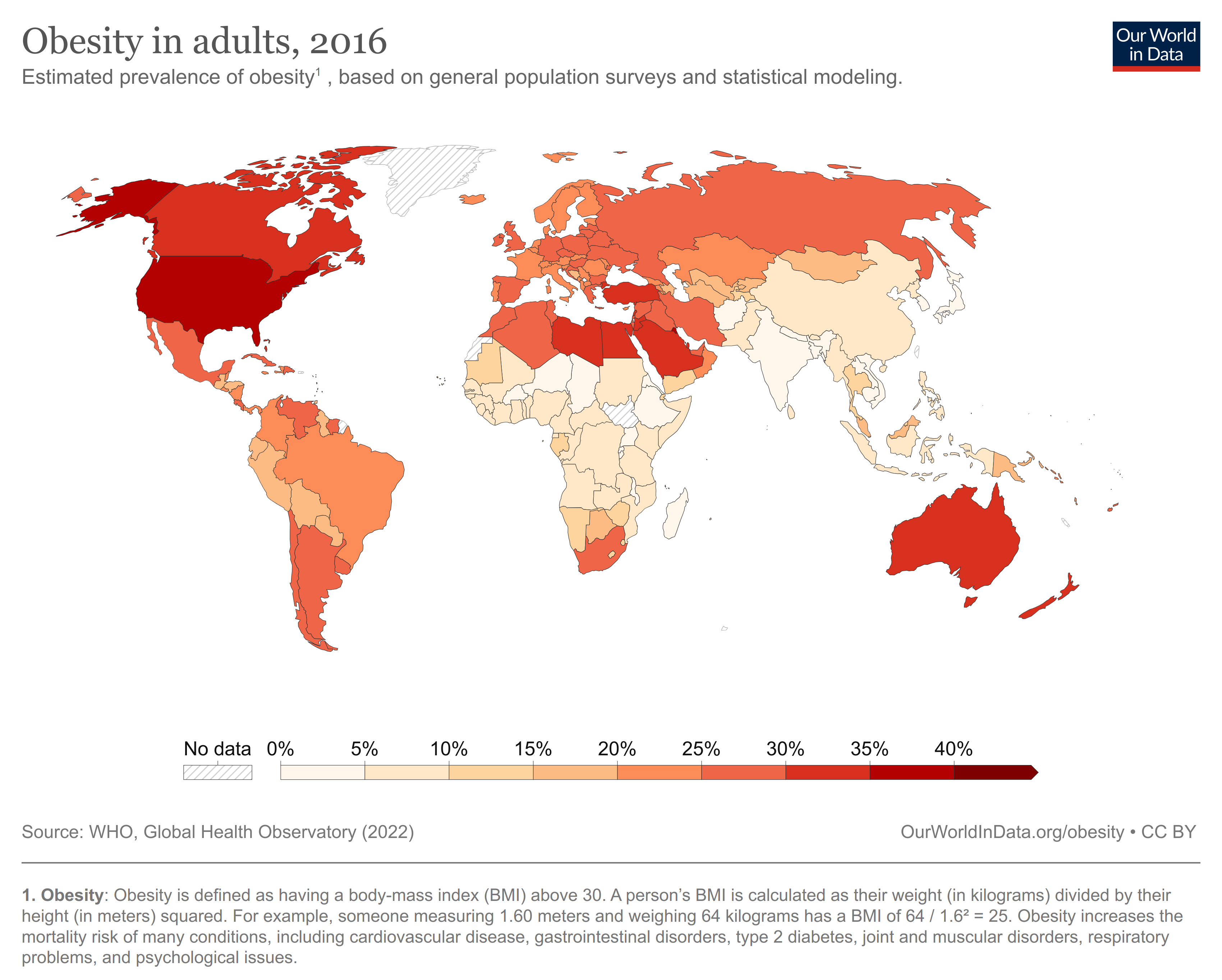
OWID also supplies a nicely formatted csv file, so that’s what I will be using. This doesn’t entirely match the top 19 (?) list above, but it’s close enough. First, the most obvious trend is that over time, the countries that get wealthy also got fatter. So let’s look at wealth and obesity:

Sure enough, we see the positive but nonlinear wealth relationship. It looks like after about 3,000 USD/year, wealth doesn’t do much or anything. I used median income here instead of GDP per capita to avoid biases from having industries, oil etc. See the prior post on GDP problems. (In detail, I had to impute some of the median income data from other economic data to avoid losing datapoints for small countries where median income data isn’t available. When I checked for results before and after, this didn’t make much difference to the overall results. It doesn’t matter much whether one uses GDPpc or median income though r = .31 vs. .32.) The plot shows that Micronesia and Polynesia — collectively I’ll just call them Polynesians — are big outliers being far fatter than expected by their wealth. If you squint, you can also see that the Anglos are above the other Europeans, and Asians are far less obese than expected (Japan, Singapore, South Korea). Let’s confirm this statistically. Since the outcome is a proportion, we need beta regression. Well, in theory, but the results from OLS are easier to understand. Results:
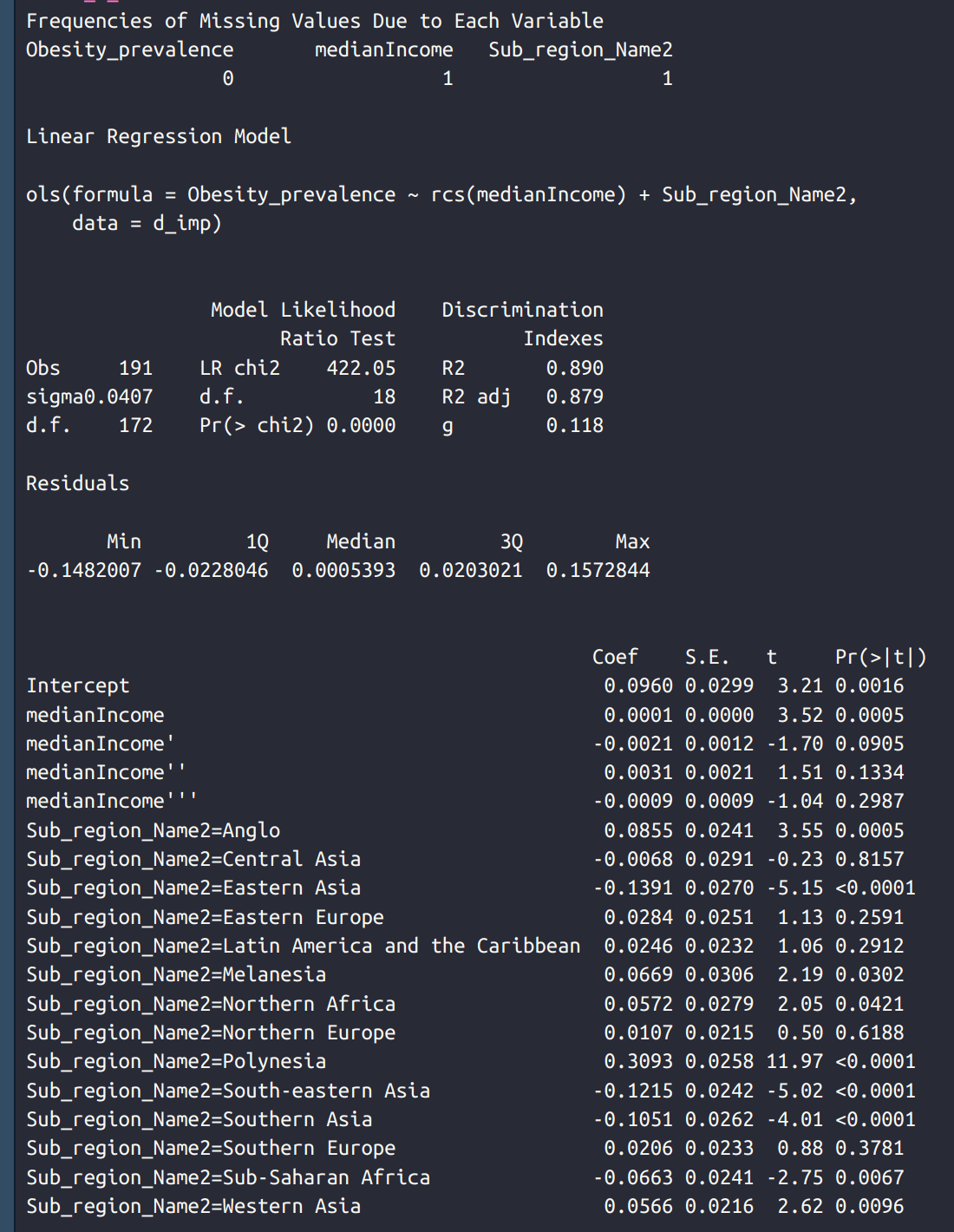
So the model explains 88% of the variance using wealth (with a natural spline for the nonlinearity) and region. The reference group is Western Europe (Austria, Belgium, France, Germany, Luxembourg, Netherlands, Switzerland). The 5 Anglo countries (USA, Canada, United Kingdom, New Zealand, Australia) are fatter than expected, p = 0.0005. The effect size is 0.086, meaning that holding wealth constant, Anglos are about 9% more obese. We can plot the model predictions to better understand it:

(I didn’t include all regions because that would clutter the plot.) The differences are rather obvious and could be taken as a rough estimate of the genetic propensity of the populations towards obesity.
The usual explanation — by which I mean the plausible yet unproven evolutionary story — given for the Polynesians is that they are the descendants of sea-faring peoples who needed to keep warm on their primitive boats as they traversed the cold pacific ocean. They thus evolved a propensity for higher adiposity in some way other another, say better energy conversion or a stronger preference for fatty foods.
But what is the explanation for the Anglos? It’s not just USA that’s special, here’s the European countries including Anglo ex-colonies:
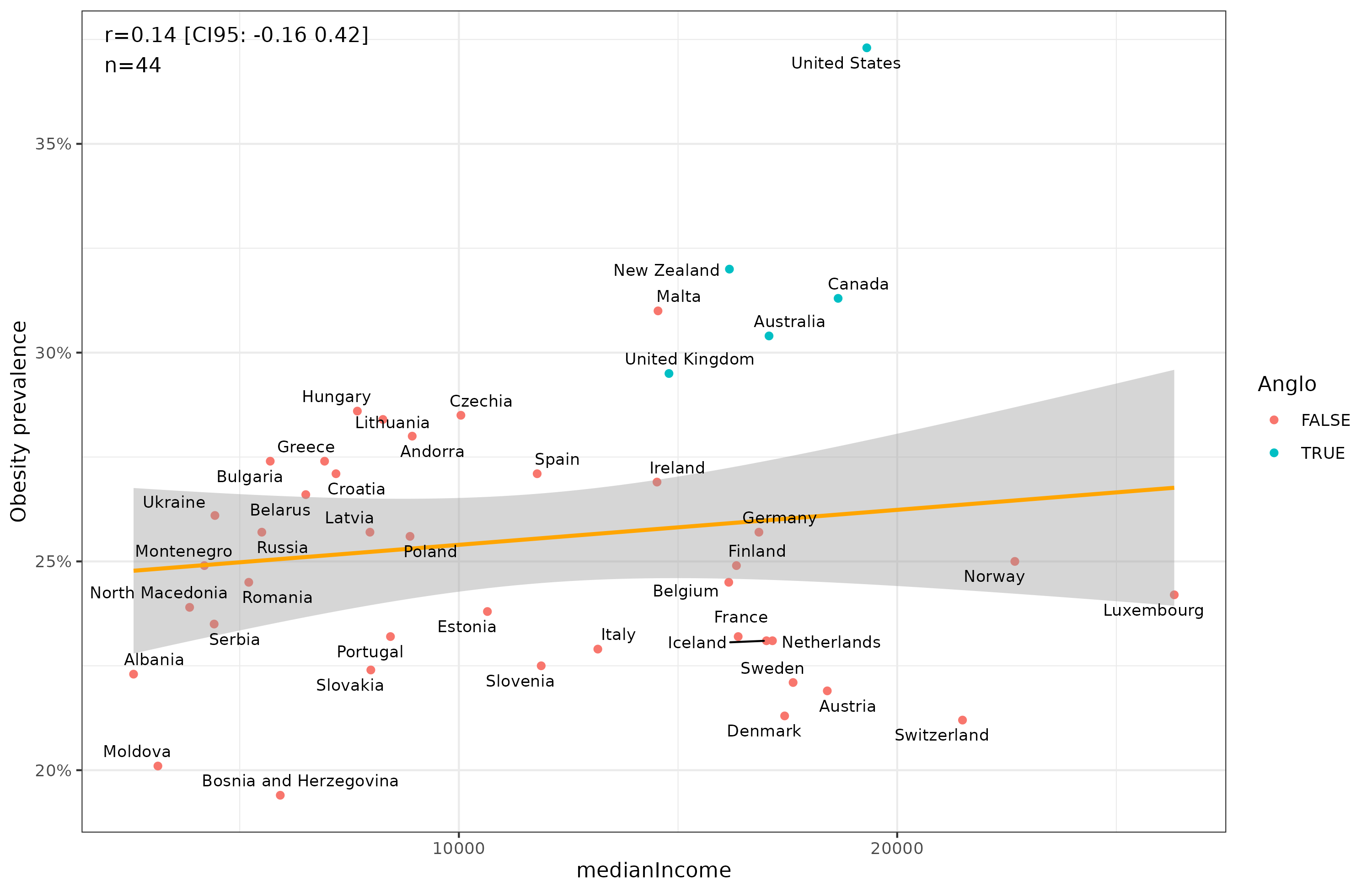
There’s just about no relationship between median income and obesity among European countries, but the Anglos are an outlying group. Only one other country joins them, and suspiciously, it’s another country that has been under long-term British influence, Malta (1813-1964). To be fair, one could also say that Ireland is pretty Anglo, but it’s not much above the regression line. If we redo the model but include Ireland among the Anglos, this doesn’t change the results too much (p < .0001, beta = 0.074). There’s also Cyprus, another country with long Anglo influence, but it’s not particularly fat either (22%). It’s not shown on the plot above since it isn’t in Europe according to the UN’s classification system.
So Anglo obesity cannot be explained by wealth, either when doing global comparisons or European comparisons. So what gives? It’s not intelligence, they don’t differ from the other north or west Europeans. It’s not climate either, as Anglos live in a variety of locations around the world from the cold winter Minnesota to nearly always warm Florida, all of which are far fatter than comparable areas in Europe. It cannot be genetics because Anglos are extremely closely related to the Dutch, Danes and French from which they recently were made out of. One would have to posit some ridiculously, somehow overlooked, fast selection. So what’s left? Well, culture broadly speaking. Many people will tell you anecdotes of their friends moving to the US and immediately getting overweight, even people who had been skinny for decades at home. When I lived in the US for a few years, I put on like 7 kilos without noticing. But calling something culture is generally just a cop-out when we don’t know specifics or won’t talk about other causes. We could try something based on World Values Survey:

But it doesn’t look promising, at least not based on these dimensions. There is an English-speaking colored region, but it’s pretty forced and not a natural cluster in these data. We need something more specific to food. Ideally, something like frequency of ordering take-out or dining at a restaurant by country. I couldn’t find a such map, but there’s proxies like McDonald’s density:

It doesn’t show anything being special about the UK vs. their less fat neighbors. It’s more or less just a map of Westernization of food, or something like that (note Israel and Cyprus). So what’s left to try? We could try looking at clustering of cuisines, that is, recipes. There’s a 2004 paper on this:
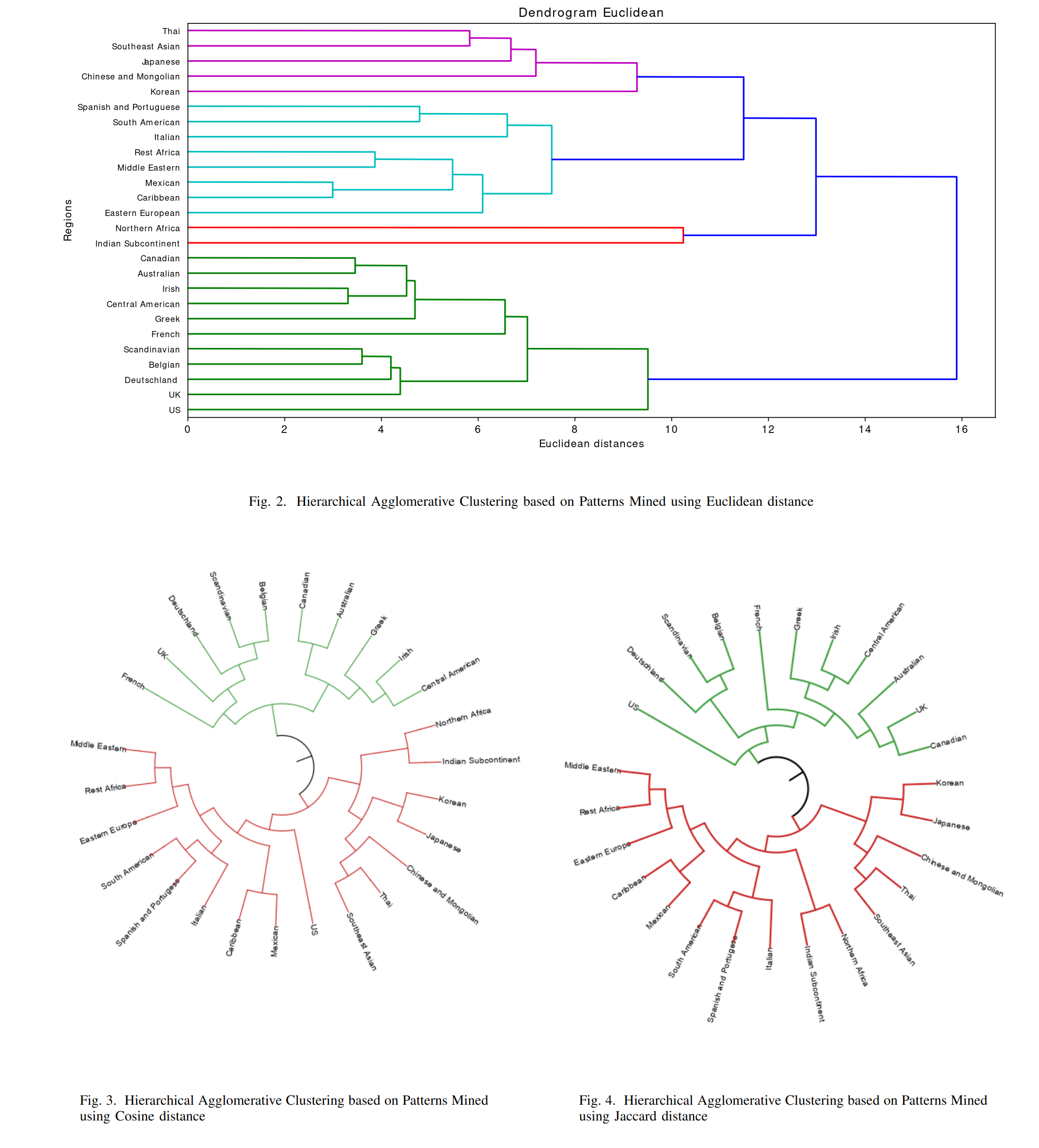
The results are not entirely satisfactory. How does Irish end up with Central American food using every method variant?? Somehow this paper only has 2 citations, so there wasn’t anything else I could find using a quick search. In any case, if the cultural culprit is the tendency to order food or eat out, then clustering recipes isn’t going to help us that much anyway.
So what about take-out? YouGov did a study of 44 markets, but the results don’t fit either. Asians buy more take-out than Europeans by a large margin.
Conclusions
- There are stark differences in obesity rates between countries. Some proportion of this can be attributed to wealth, but after about 3000-5000 USD/year, addition income doesn’t seem to result in more obesity.
- There are obvious regional differences after accounting for wealth. East Asians are quite skinny, Polynesians are extremely fat. Looking carefully, Anglos are quite a bit more obese than other Europeans, especially Americans.
- Anglo obesity cannot be explained by any factor I have been able to test, including: wealth, climate, intelligence, cuisine, and take-out frequency. Cause unknown? Is it just big portions in restaurants? Low stigma for being obese? Fat people on TV?

